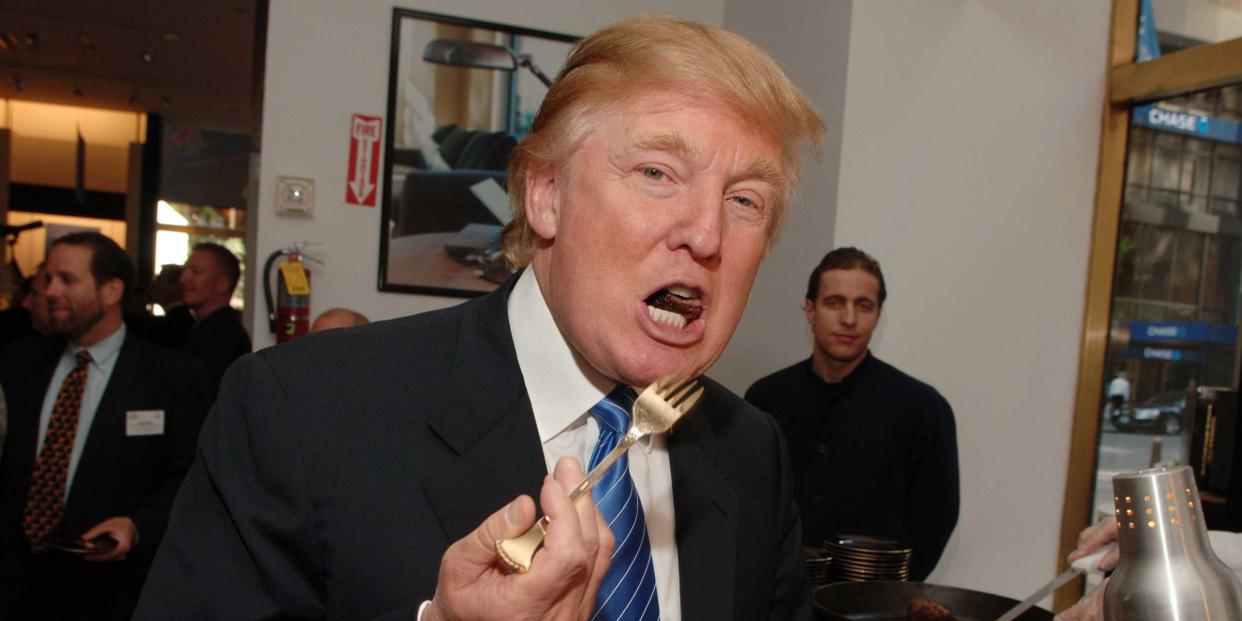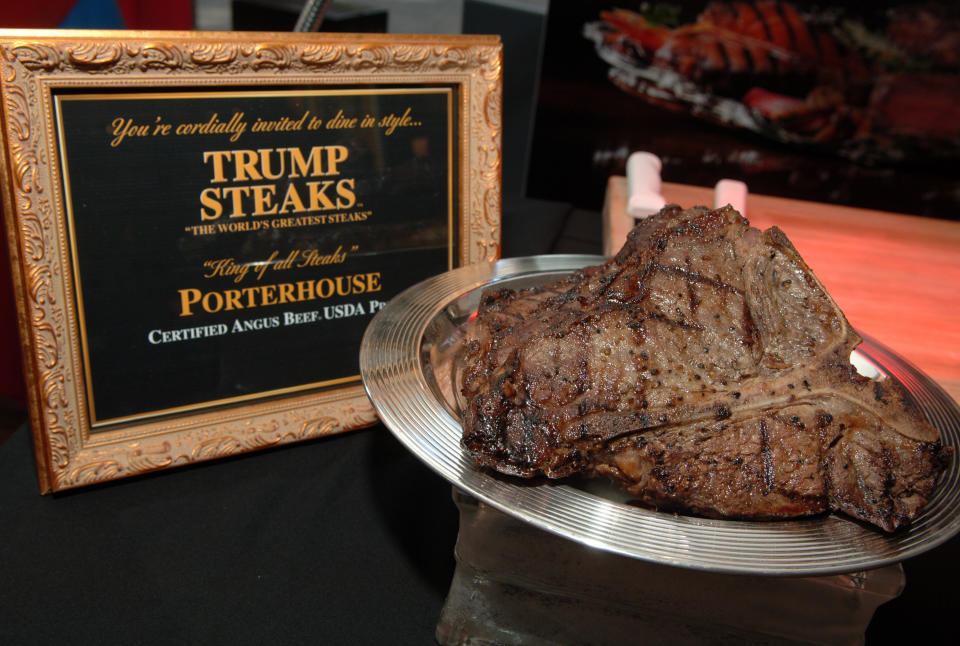What's So Bad About Ordering Steak Well Done?

Last month, when Donald Trump sat down to dinner in the restaurant of his Washington hotel-his first D.C. meal outside the White House since his inauguration-he ordered a well-done steak, topped with ketchup.
The internet criticism was swift: Eater published a story titled, "Of Course Donald Trump Puts Ketchup on His Steak;" the Huffington Post wrote, "Donald Trump Eats His Steak With Ketchup, And Twitter Isn't Happy;" and New York magazine's Grub Street declared, "Trump's Steak Order Is Even Worse Than You Thought."
It's a well-documented fact that the president likes his meat gray: "It would rock on the plate, it was so well done," his former butler once said. So why does it matter?
It would rock on the plate, it was so well done.
It's a matter of taste-pun most definitely intended. I challenge you to find a fine-dining chef who recommends his steak be cooked any more than medium. (Case in point, Anthony Bourdain, whose memoir is is titled Medium Raw: A Bloody Valentine to the World of Food and the People Who Cook.) But how you order your steak is also a socioeconomic signifier-ordering it rare not only tastes superior, it allows you to feel superior as well.
"I think this notion that well-done steak is for philistines probably comes from France and the influence of French taste," says Paul Freedman, a professor of history at Yale who specializes in the history of cuisine and restaurants. "Not that we actually like it as rare as the French do, but the notion is that somehow if you like it well-done you're not really eating steak-you're eating some kind of flavorless product."
Slate delved into the topic a few years ago, and reported on how the meat temperature measurements in cookbooks had changed over time: a 1964 version of the Joy of Cooking declared a leg of lamb "slightly rare" at 160 to 165 degrees fahrenheit but was considered "medium" in the 1997 update. And while Craig Claiborne included instructions for readers who "wish the lamb to be well-done" in a 1979 recipe, a 1990 update does not even include well-done as an option.

The New York Times's Florence Fabricant picked up on the move toward less-cooked meat in a 1982 article called "A Trend Toward 'Less Well Done.'" She cited "both Oriental and French nouvelle cuisines" as reasons for the shift, and connected the trend to a desire for fresher-tasting (read: less cooked) vegetables and raw food like sushi. (Twenty-five years later, fellow Times writer Mark Bittman asked readers to "forgive [his] snobbishness" when he declared that "well-done meat is dry and flavorless.")
In other words, ordering or cooking meat at a lower temperature came to be seen as cool, a marker of one's sophistication and familiarity with culinary trends. It also tasted better.
This applies to more than just meat, says Freedman. Fifty or 60 years ago, Americans subjected their vegetables and their steak to the same treatment. "The critique of the overcooked vegetables of your mother or your grandmother is they managed to cook all the flavor out of it," he says. "People of that generation wanted steak that they could add A.1. Sauce to."
Not that we actually like it as rare as the French do.
The pendulum has swung so far in the other direction, says Freedman, that he now orders his meat more well-done than he likes it. He's noticed that restaurants now err on the side of under-done. "It's often mushy and red, and I've almost got to make an issue of it. I actually like my steak what I think of as medium-rare, but I now order it medium because that way it comes medium-rare."
Well-done is, presumably, a universally recognized state.
Trump is hardly the first president with lamentable taste in food, Freedman says. Gerald Ford reportedly ate the same thing for lunch every day: "a ball of cottage cheese, over which he pour[ed] a small pitcherful of A.1. Sauce, a sliced onion or a quartered tomato, and a small helping of butter-pecan ice cream." (This is the man who said "eating and sleeping are a waste of time.") Richard Nixon also reportedly loved cottage cheese, along with spaghetti and meat loaf.
In his unwillingness to improve his palate, Trump is not out of harmony with some of his predecessors-and, in terms of his meat preferences, one-quarter of Americans: in 2014, a survey by FiveThirtyEight found that approximately 25 percent of steak-eating Americans said they liked their meat cooked "well" or "medium-well."
Man of the people indeed.
You Might Also Like

